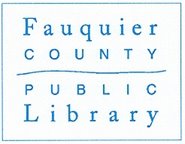The drama! the significance! the arguments!
Yes, it's all here in this musical celebration of the founding fathers of the United States, at the Second Continental Congress, writing the Declaration of Independence, prelude to the writing of the United States Constitution.
The cast includes William Daniels as John Adams, Ken Howard as Thomas Jefferson, Blythe Danner as Martha Jefferson, Howard da Silva as Benjamin Franklin.
The musical was conceived by a history teacher, and many of the lines were real quotes. The conversations between John and Abigail Adams are based on their letters to each other. However, while it is based on real history, and much of it is correct, the historical accuracy is discussed in a wikipedia article about the film and play.
Other resources at the library about the establishment of our republic, and the role of the constitution include:
Our Constitution [DVD] : a conversation- A project of the Annenberg Foundation Trust at Sunnylands
United States Supreme Court Justices Sandra Day O'Connor and Stephen Breyer talk about the Constitution with high school students and discuss why we have and need a constitution, what federalism is, how implicit and explicit rights are defined, and how separation of powers ensures that no one branch of government obtains too much power.
A conversation on the Constitution [DVD] : judicial independence- A project of the Annenberg Foundation Trust at Sunnylands
U.S. Supreme Court Justices Stephen G. Breyer, Anthony Kennedy, and Sandra Day O'Connor fielded questions in Washington Tuesday, May 16, 2006 from 50 high school students from the Philadelphia and Los Angeles areas. The students and justices discussed the significance of the judiciary and the ways that independence is protected by the Constitution.
Key Constitutional concepts [DVD] : a conversation
This documentary begins by introducing the Constitution and why it was created. It then examines key Constitutional concepts -- separation of powers and individual rights -- by focusing on two landmark cases: Youngstown v. Sawyer, a challenge to President Truman's decision to put the steel mills under government control, and Gideon v. Wainwright, in which the Supreme Court establishes the right to be represented by an attorney.
1776 : excerpts from the acclaimed history, with letters, maps, and seminal artwork by David McCullough
This includes reproductions of original letters, maps, and other illustrations.
The genius of America : how the Constitution saved our country--and why it can again by Eric Lane and Michael Oreskes.
Traces the history of the Constitution and how it came into being, exploring how it has weathered past crises, how it effectively helps us govern our nation, and the current threats to the constitutional process.
The Genius of America looks at the Constitution’s history relative to this current crisis. Starting with the eleven years between the Declaration of Independence and the Constitution’s adoption, they show how our near failure to create a loosely knit nation led the framers to devise a system that takes human nature into account. The Genius of America reminds us the Constitution is our national glue.
For additional resources, search the library's catalog
under the subject headings:
United States Constitution
United States Constitutional Convention

